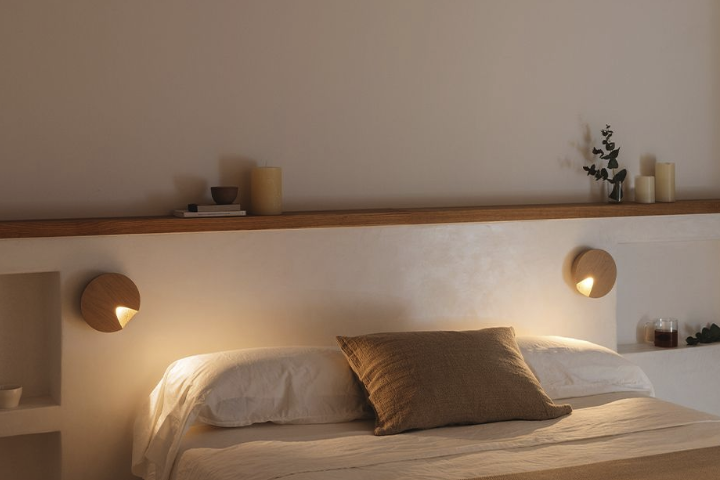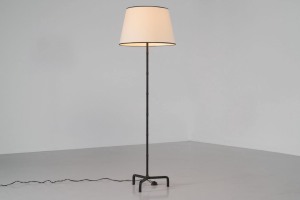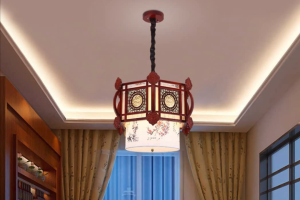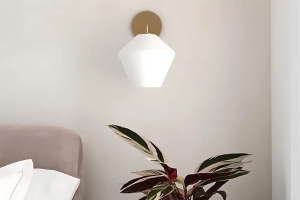Enhance Your Small Living Room with Embedded Downlight

Downlighting, a lighting technique that directs light downward from a fixture, has gained popularity in interior design, particularly in small spaces. One of the primary benefits of downlighting is its ability to create an illusion of height and spaciousness. In compact living areas, where every square inch counts, strategically placed downlights can draw the eye upward, making the room feel larger and more open.
This effect is particularly beneficial in small living rooms, where traditional overhead lighting may feel oppressive or overwhelming. By focusing light downward, downlights can enhance the architectural features of a room, such as high ceilings or decorative moldings, while simultaneously providing functional illumination. Moreover, downlighting offers versatility in terms of ambiance and mood.
The ability to control the intensity and direction of light allows homeowners to tailor their lighting to suit various activities, from reading and entertaining to relaxing. In small living rooms, where space is often at a premium, downlighting can serve multiple purposes without the need for bulky fixtures. This streamlined approach not only saves space but also contributes to a clean and modern aesthetic.
By understanding these benefits, homeowners can make informed decisions about incorporating downlighting into their small living spaces.
Choosing the Right Type of Downlight for Your Small Living Room
Selecting the appropriate type of downlight is crucial for achieving the desired effect in a small living room. There are several options available, including recessed lights, surface-mounted fixtures, and pendant lights. Recessed lights are often favored for their unobtrusive design; they are installed into the ceiling, creating a seamless look that maximizes headroom.
This type of downlight is ideal for low ceilings, as it minimizes visual clutter while providing ample illumination. Additionally, recessed lights come in various sizes and beam angles, allowing homeowners to customize their lighting scheme based on the specific dimensions and layout of their space. Surface-mounted fixtures offer another stylish alternative for downlighting.
These fixtures can be mounted directly onto the ceiling or walls and come in a variety of designs, from sleek and modern to more traditional styles. They provide a broader spread of light compared to recessed options, making them suitable for illuminating larger areas within a small room. Pendant lights can also serve as downlights when hung at an appropriate height; they add a decorative element while providing focused illumination.
When choosing downlights for a small living room, it is essential to consider factors such as brightness (measured in lumens), color temperature (measured in Kelvin), and energy efficiency (such as LED options) to ensure that the selected fixtures meet both aesthetic and functional needs.
Positioning Downlights to Maximize Space and Light Distribution
The strategic positioning of downlights is vital for maximizing both space and light distribution in a small living room. A well-planned layout can enhance the overall functionality of the room while creating an inviting atmosphere. One effective approach is to install downlights in a grid pattern across the ceiling, ensuring even light distribution throughout the space.
This method helps eliminate dark corners and shadows that can make a small room feel cramped. Additionally, placing downlights near key functional areas—such as seating arrangements or reading nooks—can provide targeted illumination where it is most needed. Another consideration when positioning downlights is the height at which they are installed.
For rooms with lower ceilings, it is advisable to space the fixtures further apart to avoid creating a tunnel effect. Conversely, in rooms with higher ceilings, closer spacing can help maintain an intimate feel while ensuring adequate light coverage. Homeowners should also take into account any architectural features or furniture arrangements that may influence light placement.
For instance, if there is a focal point such as a piece of artwork or a fireplace, positioning downlights Woolerdesign to highlight these features can create visual interest and draw attention to the room’s best attributes.
Incorporating Dimmer Switches for Versatile Lighting Options
Incorporating dimmer switches into your downlighting setup can significantly enhance the versatility of your small living room’s lighting scheme. Dimmer switches allow homeowners to adjust the brightness of their downlights according to different activities and moods. For instance, during daytime gatherings with friends or family, brighter lighting may be preferred to create an energetic atmosphere.
Conversely, when winding down for the evening or enjoying a quiet night in, softer lighting can foster a more relaxed ambiance. The installation of dimmer switches is relatively straightforward and can be done by a qualified electrician or even as a DIY project for those with basic electrical knowledge. It is essential to choose dimmers that are compatible with the type of bulbs used in your downlights—LEDs often require specific dimmers designed for their technology.
By utilizing dimmer switches, homeowners can not only save energy but also prolong the lifespan of their bulbs by reducing wear from constant high usage. This flexibility in lighting options makes dimmers an invaluable addition to any small living room.
Using Downlights to Highlight Key Features in Your Small Living Room
Downlights can be effectively employed to accentuate key features within a small living room, transforming ordinary spaces into extraordinary focal points. For example, if there is an impressive piece of artwork on display or an intricately designed feature wall, strategically placed downlights can draw attention to these elements while enhancing their visual appeal. By directing light onto these features, homeowners can create depth and dimension within the room, making it feel more dynamic and engaging.
In addition to artwork, architectural details such as crown molding or built-in shelves can also benefit from downlighting. Installing fixtures that wash these features with light not only highlights their beauty but also adds an element of sophistication to the overall design. When highlighting key features with downlights, it is important to consider the angle and intensity of the light; using adjustable fixtures allows for greater control over how these elements are illuminated.
This thoughtful approach ensures that the lighting complements rather than overwhelms the space.
Creating a Cozy Ambiance with Warm White Downlighting
Creating a Cozy Atmosphere
This softer hue mimics the warmth of traditional incandescent bulbs and fosters a sense of comfort that is particularly appealing in intimate settings like living rooms.
Energy Efficiency and Aesthetics
When selecting warm white downlights, homeowners should consider using LED options that offer energy efficiency without sacrificing warmth. The right choice of bulbs can enhance the overall aesthetic of the room while reducing energy consumption and maintenance costs over time.
Layered Lighting for Flexibility
Additionally, layering warm white downlighting with other light sources—such as floor lamps or table lamps—can further enrich the ambiance by providing varied levels of illumination throughout the space. This layered approach allows for flexibility in mood setting while ensuring that the small living room remains functional and inviting.
Avoiding Overhead Downlighting to Prevent Harsh Glare in Small Spaces
While downlighting can be an effective way to illuminate small spaces, it is essential to avoid relying solely on overhead fixtures that may create harsh glare or unflattering shadows. In compact living rooms, where lighting needs are often more nuanced, overhead downlighting can lead to discomfort and detract from the overall aesthetic appeal of the space. Instead, homeowners should consider incorporating a mix of lighting sources that work together harmoniously.
To mitigate glare from overhead downlights, it may be beneficial to use fixtures with adjustable angles or those that provide diffused light rather than direct beams. This approach softens the illumination and creates a more pleasant environment for occupants. Additionally, combining downlights with other types of lighting—such as wall sconces or floor lamps—can help distribute light more evenly throughout the room while minimizing harsh contrasts between light and shadow.
Incorporating Downlights into Built-in Shelves and Cabinets for Added Functionality
Built-in shelves and cabinets are common features in many small living rooms; incorporating downlights into these elements can significantly enhance their functionality while adding visual interest. By installing downlights within shelves or above cabinets, homeowners can illuminate decorative items or books while creating an attractive display that draws attention without overwhelming the space. This integration not only serves practical purposes—such as improving visibility when searching for items—but also contributes to the overall design aesthetic of the room.
For example, using warm white downlights within built-in shelves can create a cozy glow that highlights personal collections or cherished mementos. Furthermore, adjustable fixtures allow homeowners to change the focus of light as needed, ensuring that different items can be showcased effectively over time.
Utilizing Downlights to Create the Illusion of a Larger Space
One of the most compelling advantages of using downlighting in small living rooms is its ability to create an illusion of spaciousness. By strategically placing fixtures at varying heights and angles, homeowners can manipulate how light interacts with surfaces within the room. For instance, illuminating walls with downlights can draw attention away from lower furniture pieces and create a sense of verticality that makes the space feel more expansive.
Additionally, using brighter downlights in specific areas—such as near windows or reflective surfaces—can enhance natural light during daytime hours while contributing to an airy atmosphere overall. This technique not only helps visually expand the room but also encourages movement throughout the space by guiding the eye toward different focal points. By thoughtfully employing downlighting techniques, homeowners can transform their small living rooms into inviting environments that feel much larger than their actual dimensions.
Incorporating Downlights into Your Small Living Room’s Design Aesthetics
The integration of downlighting into your small living room’s design aesthetics requires careful consideration of style and coherence with existing decor elements. Whether your design leans toward modern minimalism or classic elegance, selecting fixtures that complement your overall theme is essential for achieving a cohesive look. For instance, sleek recessed lights may suit contemporary spaces well, while decorative surface-mounted fixtures could enhance traditional interiors.
Moreover, color finishes play an important role in how well downlights blend with other design elements within the room. Choosing fixtures in finishes such as brushed nickel or matte black can add sophistication without drawing too much attention away from other decor pieces. Additionally, incorporating dimmable options allows homeowners to adjust lighting levels according to different occasions while maintaining harmony with their design vision.
Maintenance Tips for Embedded Downlights in Small Living Rooms
Maintaining embedded downlights in small living rooms is crucial for ensuring optimal performance and longevity over time. Regular cleaning is essential; dust accumulation on fixtures can diminish brightness and affect overall aesthetics. Homeowners should periodically wipe down surfaces with a soft cloth or use a vacuum attachment designed for delicate cleaning tasks to remove dust without damaging fixtures.
In addition to cleaning, it is important to check bulbs regularly for signs of wear or burnout; replacing them promptly ensures consistent illumination throughout the space. Homeowners should also familiarize themselves with any specific maintenance requirements associated with their chosen fixtures—some may require professional servicing if they are hardwired into electrical systems or if they have complex components that need attention over time. By prioritizing maintenance efforts, homeowners can enjoy beautifully illuminated small living rooms that remain functional and inviting for years to come.





